 W
WThe Acaxee Rebellion was an insurrection against Spanish rule in Mexico by Acaxee Indians in 1601.
 W
WThe Anglo–Cherokee War, was also known from the Anglo-European perspective as the Cherokee War, the Cherokee Uprising, or the Cherokee Rebellion. The war was a conflict between British forces in North America and Cherokee Indian tribes during the French and Indian War. The British and the Cherokee had been allies at the start of the war, but each party had suspected the other of betrayals. Tensions between British-American settlers and the Cherokee increased during the 1750s, culminating in open hostilities in 1758.
 W
WThe Apache Wars were a series of armed conflicts between the United States Army and various Apache nations fought in the southwest between 1849 and 1886, though minor hostilities continued until as late as 1924. The United States inherited conflicts between American settlers and Apache groups when Mexico ceded territory after the Mexican–American War in 1846. These conflicts were continued as new United States citizens came into traditional Apache lands to raise livestock, crops and to mine minerals.
 W
WThe Apache–Mexico Wars, or the Mexican Apache Wars, refer to the conflicts between Spanish or Mexican forces and the Apache peoples. The wars began in the 1600s with the arrival of Spanish colonists in present-day New Mexico. War between the Mexicans and the Apache was especially intense from 1831 into the 1850s. Thereafter, Mexican operations against the Apache coincided with the Apache Wars of the United States, such as during the Victorio Campaign. Mexico continued to operate against hostile Apache bands as late as 1915.
 W
WThe Aroostook War was a military and civilian-involved confrontation in 1838–1839 between the United States and the United Kingdom over the international boundary between the British colony of New Brunswick and the U.S. state of Maine. Two Canadian militiamen were injured by black bear irregulars before top-level diplomats from the U.S. and Britain met in Washington and forged a peaceful compromise. The Webster–Ashburton Treaty of 1842 settled the border along the line it still holds today. The term "war" was rhetorical; local militia units were called out but never engaged in actual combat. The event is best described as an international incident.
 W
WBald Hills War (1858–1864) was a war fought by the forces of the California Militia, California Volunteers and soldiers of the U. S. Army against the Chilula, Lassik, Hupa, Mattole, Nongatl, Sinkyone, Tsnungwe, Wailaki, Whilkut and Wiyot Native American peoples.
 W
WThe Battle of Orange Walk took place on 1 September 1872 when a force of Icaiche Maya led by Marcus Canul attacked the town of Orange Walk in British Honduras. Canul had previously been involved in conflict with the British authorities over alleged infringements of his people's land rights and non-payment of rent and one motive for the raid may have been to seize the district magistrate for ransom. Canul and his men crossed the border from Mexico the day before the battle and were able to reach the town undetected by the British. They launched a surprise attack that caught the small garrison unaware – the British commanders were in the bath at the time the battle started. The British forces – a small detachment of the West India Regiment – successfully defended their barracks building for a number of hours, inflicting heavy casualties on the Maya and fatally wounding Canul. The Maya then withdrew into Mexico.
 W
WThe Battle of the San Gabriels was an 1839 skirmish in the Texas–Indian wars.
 W
WThe Beaver Wars, also known as the Iroquois Wars or the French and Iroquois Wars, encompass a series of conflicts fought intermittently during the 17th century in America. They were battles for economic welfare throughout the Saint Lawrence River valley in Canada and the lower Great Lakes region which pitted the Iroquois against the northern Algonquians and the Algonquians' French allies. From medieval times, Europeans had obtained furs from Russia and Scandinavia. American pelts came on the European market during the 16th century, decades before the French, English, and Dutch established permanent settlements and trading posts on the continent. Basque fishermen chasing cod off Newfoundland's Grand Banks bartered with local Indigenous peoples for beaver robes to help fend off the Atlantic chill. By virtue of their location, the tribes wielded considerable influence in European–Indian relations from the early seventeenth century onwards.
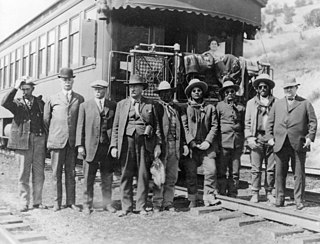 W
WThe Bluff War, also known as Posey War of 1915, or the Polk and Posse War, was one of the last armed conflicts between the United States and native Americans. It began in March 1914 and was the result of an incident between a Utah shepherd and Tse-ne-gat, the son of the Paiute Chief Narraguinnep ("Polk"). It was notable for involving Chief Posey and his band of renegades who helped Polk fight a small guerrilla war against local Mormon settlers and Navajo policemen. The conflict centered on the town of Bluff, Utah and ended in March 1915 when Polk and Posey surrendered to the United States Army.
 W
WThe Buffalo Hunters' War, or the Staked Plains War, occurred in 1877. Approximately 170 Comanche warriors and their families led by Quohadi chief Black Horse or Tu-ukumah left the Indian Territory in December, 1876, for the Llano Estacado of Texas. In February, 1877, they, and their Apache allies, began attacking buffalo hunters' camps in the Red River country of the Texas Panhandle, killing or wounding several. They also stole horses from the camp of Pat Garrett.
 W
WThe Buffalo Soldier tragedy of 1877, also known as the Staked Plains Horror, occurred when a combined force of Buffalo Soldier troops of the 10th Cavalry and local buffalo hunters wandered for five days in the near waterless Llano Estacado region of north-west Texas and eastern New Mexico during July of a drought year, where four soldiers and one buffalo hunter died.
 W
WThe Caste War of Yucatán (1847–1901) began with the revolt of native Maya people of the Yucatán Peninsula against the European-descended population, called Yucatecos. The latter had long held political and economic control of the region. A lengthy war ensued between the Yucateco forces in the northwest of the Yucatán and the independent Maya in the southeast. There was regular raiding between them.
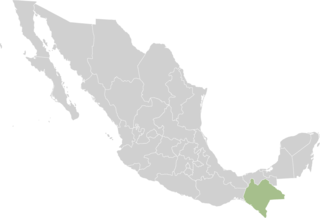 W
WThe Chiapas conflict refers to the 1994 Zapatista uprising, the 1995 Zapatista crisis and their aftermath, and tensions between the indigenous peoples and subsistence farmers in the Mexican state of Chiapas from the 1990s to the present day.
 W
WThe Cherokee–American wars, also known as the Chickamauga Wars, were a series of raids, campaigns, ambushes, minor skirmishes, and several full-scale frontier battles in the Old Southwest from 1776 to 1795 between the Cherokee and American settlers on the frontier. Most of the events took place in the Upper South. While the fighting stretched across the entire period, there were extended periods with of little or no action.
 W
WThe Chickasaw Campaign of 1736 consisted of two pitched battles by the French and allies against Chickasaw fortified villages in present-day Northeast Mississippi. Under the overall direction of the governor of Louisiana, Jean-Baptiste Le Moyne de Bienville, a force from Upper Louisiana attacked Ogoula Tchetoka on March 25, 1736. A second force from Lower Louisiana attacked Ackia on May 26, 1736. Both attacks were bloodily repulsed.
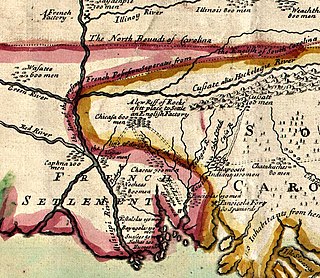 W
WThe Chickasaw Wars were fought in the 18th century between the Chickasaw allied with the British against the French and their allies the Choctaws and Illinois Confederation. The Province of Louisiana extended from Illinois to New Orleans, and the French fought to secure their communications along the Mississippi River. The Chickasaw, dwelling in northern Mississippi and western Tennessee, lay across the French path. Much to the eventual advantage of the British and the later United States, the Chickasaw successfully held their ground. The wars came to an end only with the French cession of New France to the British in 1763 according to terms of the Treaty of Paris.
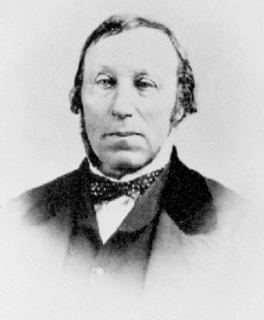 W
WThe Chilcotin War, the Chilcotin Uprising or the Bute Inlet Massacre was a confrontation in 1864 between members of the Tsilhqot'in (Chilcotin) people in British Columbia and white road construction workers. Fourteen men employed by Alfred Waddington in the building of a road from Bute Inlet were killed, as well as a number of men with a pack-train near Anahim Lake and a settler at Puntzi Lake.
 W
WThe Comanche Wars were a series of armed conflicts fought between Comanche peoples and Spanish, Mexican, and American militaries and civilians in the United States and Mexico from as early as 1706 until at least the mid-1870s. The Comanche were the Native American inhabitants of a large area known as Comancheria, which stretched across much of the southern Great Plains from Colorado and Kansas in the north through Oklahoma, Texas, and eastern New Mexico and into the Mexican state of Chihuahua in the south. For more than 150 years, the Comanche were the dominant native tribe in the region, known as “the Lords of the Southern Plains”, though they also shared parts of Comancheria with the Wichita, Kiowa, and Kiowa Apache and, after 1840, the southern Cheyenne and Arapaho.
 W
WThe Comanche–Mexico Wars was the Mexican theater of the Comanche Wars, a series of conflicts from 1821 to 1870. There were large-scale raids into northern Mexico by the Comanche and their Kiowa and Kiowa Apache allies, which left thousands of people dead. The Comanche raids were sparked by the declining military capability of Mexico during the turbulent years after it gained independence in 1821, as well as a large and growing market in the United States for stolen Mexican horses and cattle.
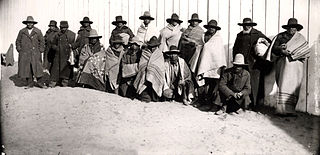 W
WThe Crazy Snake Rebellion, also known as the Smoked Meat Rebellion or Crazy Snake's War, was an incident in 1909 that at times was viewed as a war between the Creek people and American settlers. It should not be confused with an earlier, bloodless, conflict in 1901 involving many of the same people. The conflict consisted of only two minor skirmishes, and the first was actually a struggle between a group of marginalized African Americans and a posse formed to punish the alleged robbery of a piece of smoked meat.
 W
WThe Crow War, also known as the Crow Rebellion, or the Crow Uprising, was the only armed conflict between the United States and the Crow tribe of Montana, and the last Indian War fought in the state. In September 1887 the young medicine man Wraps-Up-His-Tail, or Sword Bearer, led a small group of warriors in a raid against a group of Blackfoot which had captured horses from the Crow reservation. Following the raid, Sword Bearer led his group back to the Crow Agency to inform the Indian agent of his victory, but an incident arose which ended with the young leader taking his followers into the mountains. In response, the United States Army launched a successful campaign to bring the Crow back to the reservation.
 W
WThe Dummer's War was a series of battles between New England and the Wabanaki Confederacy who were allied with New France. The eastern theater of the war was fought primarily along the border between New England and Acadia in Maine, as well as in Nova Scotia; the western theater was fought in northern Massachusetts and Vermont at the border between Canada and New England. During this time, Maine and Vermont were part of Massachusetts.
 W
WThe Battle of Echoee, or Etchoe Pass, was a battle on June 27, 1760, between the British and colonial force under Archibald Montgomerie and a force of Cherokee warriors under Seroweh. The encounter took place near the present-day municipality of Otto, in Macon County, North Carolina.
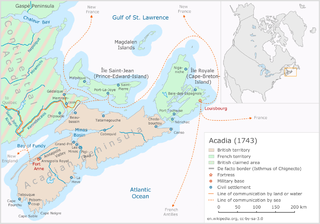 W
WFather Le Loutre's War (1749–1755), also known as the Indian War, the Micmac War and the Anglo-Micmac War, took place between King George's War and the French and Indian War in Acadia and Nova Scotia. On one side of the conflict, the British and New England colonists were led by British Officer Charles Lawrence and New England Ranger John Gorham. On the other side, Father Jean-Louis Le Loutre led the Mi'kmaq and the Acadia militia in guerrilla warfare against settlers and British forces.
 W
WThe French and Indian War (1754–1763) pitted the colonies of British America against those of New France, each side supported by military units from the parent country and by Native American allies. At the start of the war, the French colonies had a population of roughly 60,000 settlers, compared with 2 million in the British colonies. The outnumbered French particularly depended on the natives.
 W
WErnest Albert Garlington was a United States Army general who received the Medal of Honor during the Indian Wars.
 W
WThe western theatre of Dummer's War in the 1720s in northern New England was referred to as "Grey Lock's War". Grey Lock distinguished himself by conducting guerrilla raids into Vermont and western Massachusetts. He consistently eluded his pursuers, and acquired the name Wawanolet, meaning "he who fools the others, or puts someone off the track."
 W
WHanging Rocks are perpendicular cliffs rising nearly 300 feet (91 m) above the South Branch Potomac River in Hampshire County in the U.S. state of West Virginia. Hanging Rocks are located four miles (6 km) north of Romney at Wappocomo on West Virginia Route 28. Hanging Rocks has also been known throughout its history as Painted Rocks and Blue's Rocks. When distinguished from the "Lower Hanging Rocks" along the South Branch at Blues Beach to the north, Hanging Rocks is referred to as Upper Hanging Rocks.
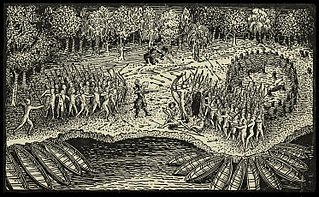 W
WDuring the summer of 1609, Samuel de Champlain attempted to form better relations with the local native tribes. He made alliances with the Wendat and with the Algonquin, the Montagnais and the Etchemin, who lived in the area of the St. Lawrence River. These tribes demanded that Champlain help them in their war against the Iroquois, who lived further south. Champlain set off with 9 French soldiers and 300 natives to explore the Rivière des Iroquois, and became the first European to map Lake Champlain. Having had no encounters with the Iroquois at this point many of the men headed back, leaving Champlain with only 2 Frenchmen and 60 natives.
 W
WJohn Bush was an African provincial soldier with the Massachusetts militia who fought on the side of Britain during the French and Indian Wars in North America. He is known for his carving of powder horns of the time. One of his 1756 horns has been part of a travelling exhibition throughout Canada and US. The quality of his carving and use of calligraphy has been called "superb". Bush's carving style and decorative embellishments were used in for the Lake George School during the French and Indian War. Other powder horn carvers adopted Bush's engraving style. They are known as the Sekrig-Page carver, the I.W. carver, and the Memento Mori carver. Bush is considered a founder of American folk art. He was captured during the battle and fall of Fort William Henry August 9, 1757. What happened after this is not known. John Bush's father, George Bush, moved to Massachusetts Bay during the eighteenth century. John Bush's mother is unknown. George was a farmer in North Parish of Shrewsbury. George died at the age of eighty years old in 1767. John had three brothers who also fought with the Massachusetts militia during the war. They were George Bush, who died on September 25, 1755 and Joseph Bush, who died on April 8, 1756.
 W
WKing George's War (1744–1748) is the name given to the military operations in North America that formed part of the War of the Austrian Succession (1740–1748). It was the third of the four French and Indian Wars. It took place primarily in the British provinces of New York, Massachusetts Bay, New Hampshire, and Nova Scotia. Its most significant action was an expedition organized by Massachusetts Governor William Shirley that besieged and ultimately captured the French fortress of Louisbourg, on Cape Breton Island in Nova Scotia, in 1745. In French, it is known as the Troisième Guerre Intercoloniale or Third Intercolonial War.
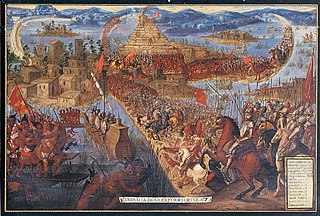 W
WThe Mexican Indian Wars were a series of conflicts fought between Spanish, and later Mexican, Guatemalan, Honduran, Salvadoran and Belizean forces against Amerindians in what is now called Mexico and surrounding areas such as Belize, Guatemala, Honduras, El Salvador and Southern/Western United States. The period begins with Spanish conquest of the Aztec Empire in 1519 and continued until the end of the Caste War of Yucatán in 1933.
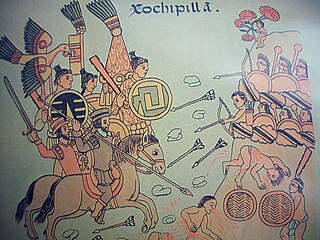 W
WThe Mixtón War was fought from 1540 until 1542 between the Caxcanes and other semi-nomadic Indigenous people of the area of north western Mexico against Spanish invaders, including their Aztec and Tlaxcalan allies. The war was named after Mixtón, a hill in the southern part of Zacatecas state in Mexico which served as an Indigenous stronghold.
 W
WThe Mohave War was an armed conflict between the Mohave people against the United States from 1858 to 1859. With the California Gold Rush of 1849, thousands of American settlers headed west through Mohave country and into California. The influx of migrants passing through, combined with simple misunderstandings, led to conflict. Fort Mohave on the Arizona side of the Colorado River was built for operations against the hostile natives and was the second American military post established on the river after Fort Yuma. Eventually advanced weaponry and tactics forced the Mohave and their allies to surrender. After the signing of a peace treaty in 1859, the Mohave never again opposed the United States through warfare. The peace also ended a long guerrilla war between the Mohave and the Maricopa of south central Arizona.
 W
WThe term Navajo Wars covers at least three distinct periods of conflict in the American West: the Navajo against the Spanish ; the Navajo against the Mexican government ; and the Navajo against the United States. These conflicts ranged from small-scale raiding to large expeditions mounted by governments into territory controlled by the Navajo. The Navajo Wars also encompass the widespread raiding that took place throughout the period; the Navajo raided other tribes and nearby settlements, who in return raided into Navajo territory, creating a cycle of raiding that perpetuated the conflict.
 W
WPierre's Hole is a shallow valley in the western United States in eastern Idaho, just west of the Teton Range in Wyoming. At an elevation over 6,000 feet (1,830 m) above sea level, it collects the headwaters of the Teton River, and was a strategic center of the fur trade of the northern Rocky Mountains. The nearby Jackson's Hole area in Wyoming is on the opposite side of the Tetons.
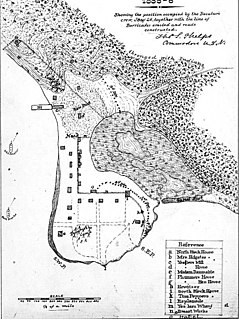 W
WThe Puget Sound War was an armed conflict that took place in the Puget Sound area of the state of Washington in 1855–56, between the United States military, local militias and members of the Native American tribes of the Nisqually, Muckleshoot, Puyallup, and Klickitat. Another component of the war, however, were raiders from the Haida and Tlingit who came into conflict with the United States Navy during contemporaneous raids on the native peoples of Puget Sound. Although limited in its magnitude, territorial impact and losses in terms of lives, the conflict is often remembered in connection to the 1856 Battle of Seattle and to the wrongful execution of a central figure of the war, Nisqually Chief Leschi. The contemporaneous Yakima War may have been responsible for some events of the Puget Sound War, such as the Battle of Seattle, and it is not clear that the people of the time made a strong distinction between the two conflicts.
 W
WQueen Anne's War (1702–1713) was the second in a series of French and Indian Wars fought in England's Thirteen American Colonies during the reign of Anne, Queen of Great Britain. In Europe, it is generally viewed as the American theater of the War of the Spanish Succession; in the Americas, it is more commonly viewed as a standalone conflict. It is also known as the Third Indian War or as the Second Intercolonial War in France.
 W
WMeeker Massacre and the White River War, Ute War, or the Ute Campaign, were conflicts that began when the Utes attacked an Indian agency on September 29, 1879, killing the Indian agent Nathan Meeker and his 10 male employees, and taking women and children as hostages. United States Army forces were called in from Fort Steele in Wyoming. Following the massacre of Meeker and others, there was an attack at Milk Creek on U.S. troops, led by Major Thomas T. Thornburgh, killing the major and 13 troops within minutes. Relief troops were called in, which resulted in a further conflict.
 W
WThe Siege of Fort Loudoun was an engagement during the Anglo-Cherokee War fought from February 1760 to August 1760 between the warriors of the Cherokee led by Ostenaco and the garrison of Fort Loudoun composed of British and colonial soldiers commanded by Captain Paul Demeré.
 W
WThe Battle of Sitka was the last major armed conflict between Russians and Alaska Natives, and was initiated in response to the destruction of a Russian trading post two years before. The primary combatant groups were the Kiks.ádi Clan of Sheetʼká Xʼáatʼi of the Tlingit nation and agents of the Russian-American Company assisted by the Imperial Russian Navy.
 W
WThe Battle of Stone Houses was a skirmish between Texas Rangers and a band of Kichai Indians which took place on November 10, 1837. The skirmish, which took place ten miles south of what is now Windthorst, Texas, was named for three stone mounds near the battlefield which appeared to the Indians to be small houses.
 W
WThe Battle of Sugar Point, or the Battle of Leech Lake, was fought on October 5, 1898 between the 3rd U.S. Infantry and members of the Pillager Band of Chippewa Indians in a failed attempt to apprehend Pillager Ojibwe Bugonaygeshig, as the result of a dispute with Indian Service officials on the Leech Lake Reservation in Cass County, Minnesota.
 W
WTecumseh's War or Tecumseh's Rebellion was a conflict between the United States and Tecumseh's Confederacy, led by the Shawnee leader Tecumseh in the Indiana Territory. Although the war is often considered to have climaxed with William Henry Harrison's victory at the Battle of Tippecanoe in 1811, Tecumseh's War essentially continued into the War of 1812, and is frequently considered a part of that larger struggle. The war lasted for two more years, until the fall of 1813, when Tecumseh and his second-in-command, Roundhead, died fighting Harrison's Army of the Northwest at the Battle of the Thames in Upper Canada, near present-day Chatham, Ontario, and his confederacy disintegrated. Tecumseh's War is viewed by some academic historians as the final conflict of a longer-term military struggle for control of the Great Lakes region of North America, encompassing a number of wars over several generations, referred to as the Sixty Years' War.
 W
WThe Tepehuán Revolt broke out in Mexico in 1616. The Tepehuán Indians attempted to break free from Spanish rule. The revolt was crushed by 1620 after a large loss of life on both sides.
 W
WThe Battle of Tippecanoe was fought on November 7, 1811 in Battle Ground, Indiana between American forces led by Governor William Henry Harrison of the Indiana Territory and Indian forces associated with Shawnee leader Tecumseh and his brother Tenskwatawa, leaders of a confederacy of various tribes who opposed European settlement of the American West. As tensions and violence increased, Governor Harrison marched with an army of about 1,000 men to attack the confederacy's headquarters at Prophetstown, near the confluence of the Tippecanoe River and the Wabash River.
 W
WChief Walkara was a Shoshone leader of the Utah Indians known as the Timpanogo and Sanpete Band. It is not completely clear what cultural group the Utah or Timpanogo Indians belonged to, but they are listed as Shoshone. He had a reputation as a diplomat, horseman and warrior, and a military leader of raiding parties, and in the Wakara War.
 W
WThe Yaqui Uprising, also called the Nogales Uprising, was an armed conflict that took place in the Mexican state of Sonora and the American state of Arizona over several days in August 1896. In February, the Mexican revolutionary Lauro Aguirre drafted a plan to overthrow the government of President Porfirio Díaz. Aguirre's cause appealed to the local Native Americans, such as the Yaqui, who organized an expedition to capture the customs house in the border town of Nogales on August 12.
 W
WThe Yaqui Wars, were a series of armed conflicts between New Spain, and the later Mexican Republic, against the Yaqui Indians. The period began in 1533 and lasted until 1929. The Yaqui Wars, along with the Caste War against the Maya, were the last conflicts of the centuries long Mexican Indian Wars. Over the course of nearly 400 years, the Spanish and the Mexicans repeatedly launched military campaigns into Yaqui territory which resulted in several serious battles and massacres.
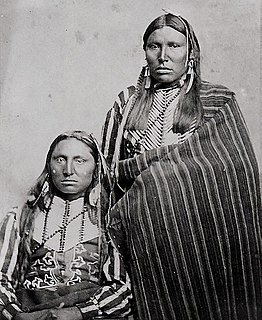 W
WThe Battle of Yellow House Canyon was a battle between a force of Comanches and Apaches against a group of American bison hunters that occurred on March 18, 1877, near the site of the present-day city of Lubbock, Texas. It was the final battle of the Buffalo Hunters' War, and was the last major fight involving the United States and Native Americans on the High Plains of Texas.
 W
WThe Yuma War was the name given to a series of United States military operations conducted in southern California and what is today southwestern Arizona from 1850 to 1853. The Yumans were the primary opponent of the United States Army, though engagements were fought between the Americans and other native groups in the region.